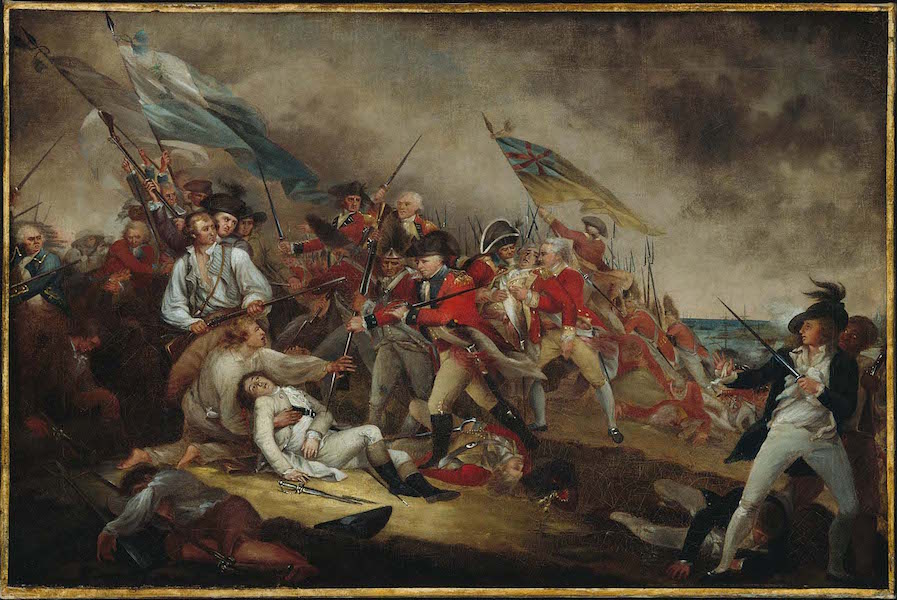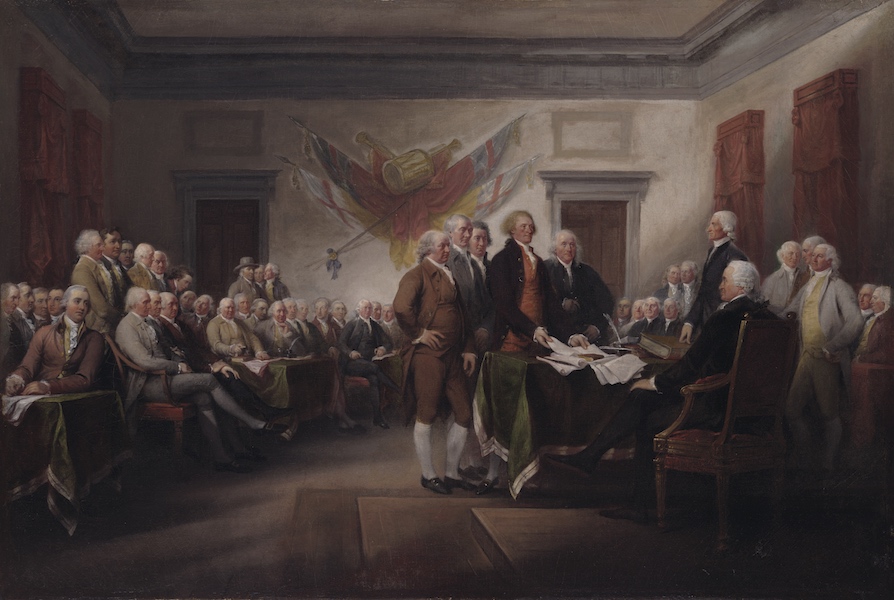John Trumbull was a prominent figure in American history, best recognized for his contributions as a painter in the country’s early years and during the Revolutionary War. Trumbull was well-known for his historical paintings that portrayed significant occasions and individuals from the American Revolutionary War and the country’s formative years. Famous paintings by him include “The Declaration of Independence,” “The Surrender of General Burgoyne,” and “The Surrender of Lord Cornwallis,” which not only depicted critical junctures in American history but also influenced how the general public understood them.
Through his paintings, Trumbull was instrumental in keeping the American Revolution’s significance and legacy alive for coming generations. His meticulous and precise depictions of historical occurrences have produced priceless visual recordings that keep people informed and educated about this pivotal time in American history. In addition, Trumbull had a distinguished diplomatic career, having first assisted General George Washington in the Revolutionary War and then been the first formal envoy of the United States to Great Britain. His diplomatic endeavours influenced early American foreign policy and deepened ties between the US and other nations.
Beyond his historical paintings, Trumbull left behind a rich creative legacy. He was among the first American artists to study under famous painters like Benjamin West in Europe, where he received professional training. Trumbull’s work shaped the historical painting tradition in the US, impacting later American art generations. Trumbull was acquainted with his era’s Founding Fathers and other notable individuals. He engaged with and painted portraits of prominent historical characters, including George Washington, Alexander Hamilton, John Adams, and Thomas Jefferson, adding to the body of work documenting their lives.
Art of John Trumbull
Children of the wealthy and influential Connecticut mercantile and political family John Trumbull had respectable educations in business, politics, religion, and classical studies. Faith, the older sister, had started painting in oil. The daughter’s artwork was hung in the parlour by her mother and namesake. When John saw the canvases, he tried to sketch them in pencil to put on the “nicely sanded floors” that would soon be “constantly scrawled” with his crude illustrations.
He was chosen to serve on the New York Academy of Fine Arts board of directors, subsequently becoming the American Academy of Fine Arts. His success was, however, short-lived due to the economic fallout from the Embargo Act of 1807, which restricted foreign trade. He departed in 1808 for Connecticut, then travelled to eastern Canada and New York State to sketch. After an injury as a kid left him blind in one eye, he and his wife travelled back to England in 1809 to receive treatment for his deteriorating vision. This partial blindness is cited by some observers, including contemporaries, as the reason for Trumbull’s exceptional skill with small-scale paintings.
John Trumbull studied the perspective theories of mathematician Brooke Taylor, artist Joshua Kirby, and artist William Hogarth’s 1753 book Analysis of Beauty. He created Death of Paulus Emilius at the Battle of Cannae, his first unique composition, at the age of eighteen, using figures he had taken from engravings. He was deeply interested in historical themes.
Declaration of Independence
One of John Trumbull’s most well-known paintings and an essential part of American art history is the “Declaration of Independence” painting. It shows the drafting committee submitting the draft of the Declaration of Independence to the Second Continental Congress on June 28, 1776. It was completed between 1817 and 1820.
The moment when the President of the Continental Congress, John Hancock, receives the Declaration of Independence from Thomas Jefferson, the principal author, is depicted in Trumbull’s painting. The composition features several well-known individuals involved in drafting and approval, including Benjamin Franklin, Roger Sherman, Robert Livingston, and John Adams.
Trumbull used written descriptions, observations, and portraits to carefully study the look of the people portrayed in the picture. Trumbull included the figures, even though not all of them were present at the time, to represent the Continental Congress’s broader involvement in the writing of the Declaration. The historical significance of the American colonies’ declaration of independence from British authority is depicted in the picture. Trumbull’s depiction, in which the characters are shown in severe contemplation, highlights the occasion’s solemnity and gravity.
The original artwork, kept in the United States Capitol Rotunda in Washington, D.C., is roughly 20 by 31 feet. Trumbull intended for the painting to be a part of a more extensive series that depicted important American Revolutionary War events. The “Declaration of Independence” painting by Trumbull has come to symbolize the beginning of American independence. It serves as a visual reminder of the values and ideas expressed in the Declaration and is frequently replicated in textbooks, educational materials, and Independence Day celebrations.

When discussing the iconography of the Founding Fathers, one has to revert to the United States Capitol in Washington D.C. and to the rotunda, where crucial scenes from U.S. foundational mythology are exhibited. Whereas George Washington appears in the rotunda in the Trumbull painting General George Washington Resigning His Commission (1824) as commander-in-chief, the focus here will be on the representation of the group of founders in The Declaration of Independence (1818), also by Trumbull, who painted a series of four rotunda paintings. The painting titled The Declaration of Independence is one of the most canonical renderings of the foundational moment of the ‘exceptional union’ called the United States; its title does not reference the founders’ names but their performative act of declaring independence and the document confirming that act. It is one among several iconic renderings of foundational moments in U.S. history displayed in the rotunda today, including Howard Chandler Christy’s The Signing of the Constitution (1940) as well as Barry Faulkner’s murals The Declaration of Independence and The Constitution of the United States, write Heike Paul in her book, The Myths That Made America.
Heike Paul quoted Irma B Jaffe’s observation about John Trumbull’s artistic practice as a ‘patriot-artist of the American Revolution’. Jefferson hands the parchment to John Hancock, the first signer of the Declaration of Independence and the President of the Continental Congress at the time, at the composition’s centre. Beneath Jefferson is another drafting committee member, along with John Adams, Roger Sherman, Robert Livingston, and Benjamin Franklin, some of whom are more widely regarded as Founding Fathers than others.
According to Heike Paul, ‘ Trumbull (who had previously painted mostly religious scenes and battle scenes) tried to work out an iconography (and hagiography) of American democracy by focusing on what he considered to be the central aspects of its foundation: the Founding Fathers and the foundational document in a situation of rational contemplation and ceremonial order.





